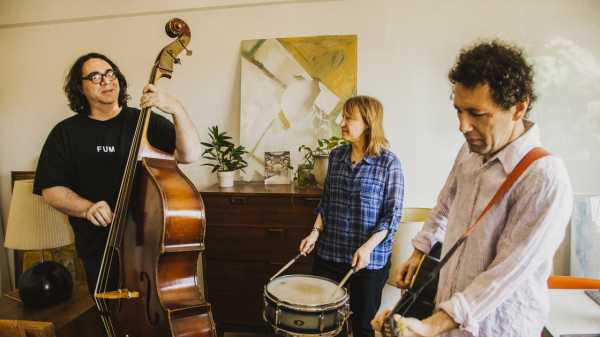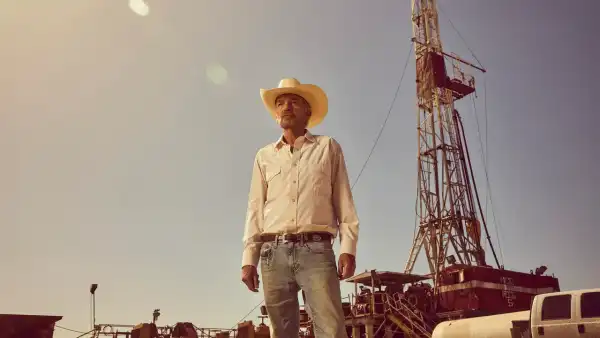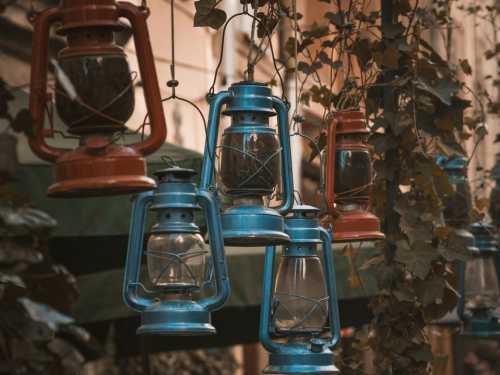
On Wednesday evening, shortly before the release of his new album, “riot,” yo La Tengo played on the slide show at the new music National filings, in Brooklyn. Critics, friends and fans swept up in an otherworldly space—a white panel walls with a jaggedly geometric black laces, ceiling and floor, repeating pattern, sort of Avant-garde mood of the hive. Group—Georgia Hubley, Ira Kaplan and James Mcnew—came on stage and started to play a mesmerizing roar: the beginning of the first track of the album, the instrumental “You’re here.” Hearing this, people expect yo La Tengo-themed cocktails (the Mr. cool point and shoot) calmly turns to face the stage. Hubley’s drums and guitar Kaplan, warm and acquisitions, joined the battle. The band seemed hard working, but casual, his eyes down. Kaplan, as always, was wearing a striped shirt. They proceeded to the second new song, the dreamy “forever,” without greeting or fanfare. Hubley and Mcnew sang “Shoo-wop, Shu-wop,” delicately; Kaplan, as gently sang, “every night’s getting slower / days long. Hold me / wait till we cry”.
“There’s a riot going on” shares a name, almost, with a sly and the family Stone album “there’s a riot goin’ On,” from 1971, which also was released in a period of intense national longing. In the booklet of the album yo La Tengo, Luc Sante writes: “these are dark times in our heads as much as on the streets.” There are moments that require the hymns, he continues, and again the call for “the balm, the sound will wrap around you.” “Revolt” of the group’s fifteenth Studio album, provides such a balm for headphones, both at the national sawdust, it creates a special space for habitat. In the dreamy “Polynesia #1,” As the guitar drifts in Hubley sings, “I’m goin’ / Polynesia / I go / at your leisure.” Some of the songs is cozy and quiet—at the exhibition, “forever” could be heard, as the kid mutters in the crowd and ice rattling in a glass—other of rocking the cacophony. “Short-wave” feels the ocean as the churning and roiling of the water. During the jumping “for You, too,” veteran rock journalist next to me smiled and tapped his foot in time. At different points, Mcnew played bass, Kaplan and Hubley switched to guitar or keyboard, Kaplan played the maracas; the three musicians seemed to understand each other’s actions, and different layers, instruments, and moods are felt piece. The crowd stops, considerate: at one point, the stranger in front of me turned, smiled, and whispered an apology for blocking my view, that he didn’t even do. The joyous tranquillity filled the air. He felt as if the people who needed comfort found it and were glad we liked it. In Tango-Ian phrase came to mind: “I can hear the heart beating as one”.
Yo La Tengo music had a rock-n-roll kind of convenience for their fans for many years, in many ways. Hubley and Kaplan, pair since the early eighties, created the group in 1984, and Mcnew joined it in 1992. Partnership Hubley and Kaplan, and their partnership with Mcnew, feels harmonious for all the right reasons. All three are musically omnivorous; they all learned a huge amount of pop history which they rely in their work. For fans who are residents of new York, one of the pleasures of living here is the availability of yo La Tengo in the city’s cultural life—concerts, in its annual Hanukkah charity concerts in his beloved new Jersey station WFMU, to countless exciting activities, as well as in the city where we regularly watch the show and restaurants and ride my bike like we all do. The group’s unfailing ability to make good music together, decade after decade, is a Paragon of stability and creative achievement, that we don’t often see—it’s rare that you can love a group of students in the nineties and find their new music is attractive and interesting in your forties.
I talked to Mcnew, and Hubley and Kaplan at momofuku Ssäm in the East village. (They’re fans of David Chang and he’s a fan of theirs.) Part of the recording process involved to get comfortable with self-recording and self-producing. In childhood Hubley was invited to be comfortable being written; her parents, Oscar-winning animators Faith and John Hubley (“Mr. Magoo”), who did the animated segments for “sesame street” and “electric company” as well as short films, which included dialogues between children, including Hubley and her sister. (Sometimes, Hubley and her brothers and sisters will be called upon to provide sounds like “the kids are screaming” for an animated bits such as “the adventures of Letterman” on “the electric company”.) Mcnew was raised this subject and asked her how she felt, “knowing that you can be included in the project at any time.” Hubley is not to say that she was at ease in her parents Studio, or hearing the results. “I kind of like it, but there are some serious cringe, the action takes place,” she said.
“Riot” was recorded in Hoboken in the early group practice space. (Hubley and Kaplan lived in Hoboken for many years, in 1987, they had their wedding reception at the beloved, now-defunct Hoboken venue Maxwell’s, where they met in 1980 at the Philly show. Now they live in Manhattan. Mcnew lives in Brooklyn.) They record themselves, with increasing degrees of difficulty, about ten years. “Riot”, in which they are produced, due to a different process than those which they enjoyed previously, participation in Studio recording, editing, and musical improvisation. As Sante writes: “they don’t rehearse beforehand or Jam; they turned on the tape recorder and let everything goes. The song gathered more than long stretches, sometimes as much as a year to go between the parts.” Part of this process arose from their film soundtrack work which began with “game 6” and “Juno”, both from 2005, and that we will continue to hear in the upcoming documentary film based on Andrew Solomon book “far from the tree,” this summer.
In January last year, during the presidential inauguration and women’s marches—Hubley attended in Washington, D.C.; Kaplan, took part in new York, they met that night in Philadelphia to play the advantage, they thought that the title “there’s a riot going on”, and it felt right. Kaplan said the group has covered a song of sly and the family stone album once.
“We did?” Hubley asked.
“We did a College show—I think Vassar,” said he. “We were driving home late at night, with a show at the knitting factory the next day, and the Rodney king verdict came in.”
“We heard it on the radio,” said Mcnew.
“All hell breaks loose,” said Kaplan. “The next day, in the end, we were thrown together, I’m sure, sub-competent version of ‘(you caught me) smiling, and made the whole sound collage thing.”
The waiter brought a compliment from the chef—“a little taste of hams we have in the house,”and waved his hand over the plate, describing them Kentucky, Tennessee and West Virginia origin. “Wow!” Said mcnew. Restaurant momofuku Ssäm it seemed that the house, too.
Kaplan said that the unusual process of creating a “rebellion” brings spontaneity to the experience of playing the songs live. “We’ve never played them, so chase after what we did before,” he said. “We opened it as we did it.”
Mcnew said, “it’s like the dream where you discover that there is more room in your home—Wow, we have fifteen new songs! I don’t remember writing fifteen new songs.”
“It feels like the record appeared in front of us without us even looking for it,” said Kaplan.
Sourse: newyorker.com






